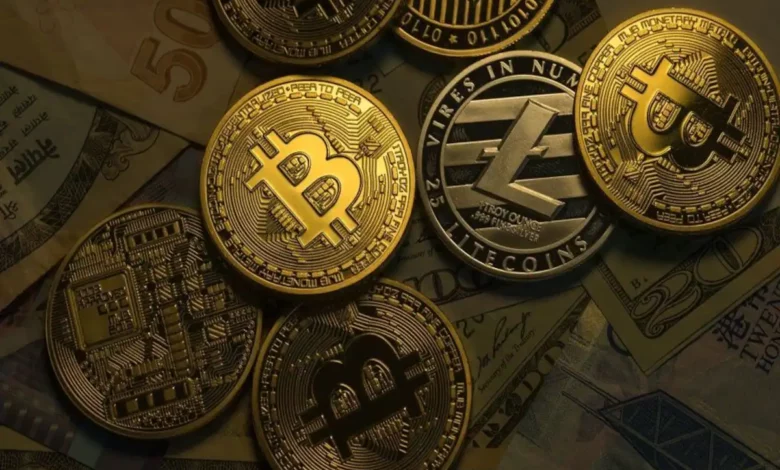Top 5 Biggest And Largest Scams Of Cryptocurrencies

Scams have been an integral part of financial institutions. The Harshad Mehta Scam was the eye-opener for stock exchanges leading to an all-around government regulation through the establishment of SEBI. The watchdogs of financial institutions have been set up after facing enormous losses as the phrase suggests, “you cannot catch a hare with a tabret”
Similarly, crypto is a whole new dimension of earning and its regulation has been long overdue in many countries. Whilst the government was busy ignoring the existence of whole parallel exchanges many individuals threw themself into earning profits through unethical means. Some of the scams were penned down into the never escaping sand of time.
Now with much-awaited regulations in place, it is still not that difficult to execute what the biggest scammer of all time had. The report from a firm that delves into blockchain reported an 80% steep rise in scams in 2021 as compared to 2020. It suggested a total of $ 7.7 billion loss-making its way directly into the scammer’s pockets. The scams have not been limited to email and phishing scams but got way more creative for a noob like us to catch it. Let’s jump into the Top 5 Biggest and Largest Scams of Cryptocurrencies without further ado.
Bhardwaj’s GainBitcoin
A former employee of Infosys, Amit Bhardwaj was all in the crypto market even before we heard the name of it. In 2013, he along with his brother was operating mainstream businesses of Highkart.com and Norton Sales respectively. Little did the legal system know what else was cooking in their labs. Both the businesses accept their payment getaway through cryptocurrencies.

This was a relative of the Ponzo Scheme, wherein not less than eight thousand people lost their big chunks of investments. Several charges left no one in the family tainted. It has been said by the near and dear ones what ED and SIT have revealed is nothing up against the actual truth.
Several charge sheets divulged that these Bhardwaj brothers were all in the maniac world of cryptocurrencies and have established their company in Singapore under the name VariableTech along with inaugurating the massive exchange, particularly for crypto called BitEx and was subsequently launched along with the trails GainBitcoin MLM scheme offering the investor pool with the mining contracts.
What was the scheme?
This scheme offered the investors a 10% monthly return, only in terms of bitcoin on their investments for 18 months. Such easy money generation and earning schemes naturally get much obvious traction from the investors. It was going all well when suddenly the investors grew exponentially and it became out of the hands to offer 10% monthly anymore. The anger was poured in through social media applications.
The crisis aversing tactic by Amit was indeed a pillar developed soon to be in shatters. He played with the negotiable terms of the contract without giving hint to any of the investors and on the date of payout he accordingly provided them with MCAP, a pre-mined token. Now, you ask why is this such a bad thing? Well, they are similar to the tokens we play with during monopoly: Negligible value outside the realm of the game. This led to a total scam of more than 22,000 crores. They were coins that were listed just in the exchange market owned by the Bharadwajs. Such a relief soon led to piles of complaints against the company. To be precise in the number, more than 33 complaining investors rushed in the door of the law enforcement from around 11 states and Union Territories. Some of them are Maharashtra, Delhi, Karnataka, etc.
Enforcement Directorate was successful in embracing the alleged in their clutches in 2019. However one year of serving and consequent bailing lead to ultimate reconciliation with fate, and he succumbed in 2022. The still ongoing process to provide relief to investors whose big chunks are still in the grips of Bhardwaj’s and it raises the question of, will they ever get justice?
The scams of Satish
Similar to the Bhardwaj Ponzo scheme, Satish Kumbhani’s bitconnect has been responsible for making a loss of $ 2.5 billion in the US alone. The losses in India were also no less. The CID team of Surat who has been the prime investigator has reported a total of INR 14,000 crore wherein the cut for Satish’s partner Divyesh Kumar Dhansukhlal Darji who was responsible for the conduct in the Asia quarters was 10%. It has also come into view that they have running two more scams parallel to it namely Regal coin and Dekado coin.

The concept of this Ponzo scheme has been the same as the Bhardwaj’s. They have listed their bitcoin in the application of bitconnect known as the bitconnect coins. The scheme was alleged to be helping the investor gain a pretty sum of 1% daily interest rate and the ROI was said to be doubled if the investments hit the cut-off of 100 days. Thus, an attractive offer welcomed many eyes. As you can conclude just by observing the scheme how shady it sounds and thus it was termed as more aggressive than the previous strategy.
The San Diego court of US ordered the immediate imprisonment of Satish under the section of committing a fraud and manipulating the prices of their coins along with the functioning of money transferring under an unlicensed organization, which in turn caused loads of loss to the investors while the founder walks away with huge profits. He was also charged with the charge of international money laundering conspiracy.
In India, however, Darji was put in custody and finally arrested by the CID team. He hasn’t served long owing to the approval of bail by the high court and since then they have been hiding secretly and discretely so far so much that even the US court hasn’t grabbed him with its giant and extended jaws.
Nishad’s Moris Coins
Observing a similar streak in every scam, this one went a little too wild. The Company led by Kerela’s boy Nishad K was far away from knowing a good camouflage. The company called the Long Rich Global, Long Rich Technologies, and Morris Trading solutions which held its operation from its headquarters in Bengaluru, had no blockchain ID whatsoever, no established customer care, or a proper emailing system and it was soon discovered that it isn’t even listed in the crypto exchanges. It used to make the transaction in what is been called as Morris Coin. Despite such obvious scamming red flags, the company was able to call on board around 11 lakh people with a minimum investment of Rs 15,000. In its scheme, it promised a daily return of INR 270 or 4.4x profit margins. Further, an additional benefit strategy was also run wherein investors were promised a 30%-40% benefit on every successful referral.
The chaotic affair was what a Moris Coin became soon. Without getting into technicalities all we have to know is it promised a false. Kerala police were successful in detaining him, however, the Kerala high court granted him bail which soon led to his absconding, and ED is in search of him attaching a property worth Rs 36 crore to date.
The squid play
A very popular series on Netflix, Squid Game has found its way into frauding people through cryptocurrency. This was a result of social media influence as many influencers from around the globe found themselves entrapped within the vines of this fraud. It began with the development of squid coin tokens which were an unlicensed and alternative stream of revenue for many teenagers. The growth of this particular currency was so exceptional that within a few weeks, a straight vertical growth graph got established. According to renowned analysts like Forbes, the currency grew from just a few bucks to around $3000.
However, the problem began when the crypto investors of squid coin tokens weren’t able to sell or bought any more of them. However, the trading wasn’t ceased for all the investors owing to the creators having built an anti-sell-off mechanism, and in turn, it ended with the same fate as all the coins aforelisted. The creators and partners walk away with heavy profits while the investor was left in the dump.
As social media proved to expand the coin or token, in a similar way it helped others to fall into the hassles of it. This incident was completely innovative and unique to the world, leaving the unaffected in awe.
The charity for the evils
Another social media-influenced scam was the Savethekids tokens. The famous influencers of FaZe Clan members helped in the marketing of these coins and promoted them as a charity- based tokens. The trusting followers helped them in reaching their goals by blinding investing without undertaking thorough research. This again like all other schemes became a pump and dump scheme wherein the administrator walked away with immense profits and investors were left at the mercy of the legal system.
What made it attractive to investors was the way it has been marketed around the world. It was said that investing in this new currency will help not only to save the kids around the world but help its investors to earn profits as the creators of this currency has connections with world-class brands. However, since you all have guessed with its mention in this article it was merely a rug scheme. A scheme is termed a rug scheme when the influencers promote a strategy just to gain investors’ trust and later walk away with huge profits. Therefore, initially, Savethekids was a great success but as soon as it went public, it became worthless.
This would easily be over at this point but other YouTubers were on the mission of solving this messed up the web as somebody from the group in which FAze was the member observed that this particular YouTuber tends to promote schemes that went into shackles. And therefore the whole revelation of truth led to the kicking out of FaZe out of the group.
This is very prevalent even today. Many influencers around the globe use their massive user base to fool people and earn exponential sums. It is hence advised to never solely believe even on your favorite youtube and undergo thorough research of your own.
Conclusion
There is no denying the fact that scams are an integral part of investing instruments. While some securities are backed by the government others are held by private companies. Cryptocurrency is a risky instrument in itself and getting stuck into schemes that involve its trading to earn easy money is indeed a dice of death. The scheme that promises steady and significant returns should be seen with doubt and couldn’t be trusted blindly. As written earlier, research in any investment can go a long way, and it’s always better to build your walls strong to protect yourself from your enemies.
Crypto investments shouldn’t be treated as equity or commodity investments. They should always be thought of as a risky venture requiring extra effort to be put into understanding any scheme whatsoever.




